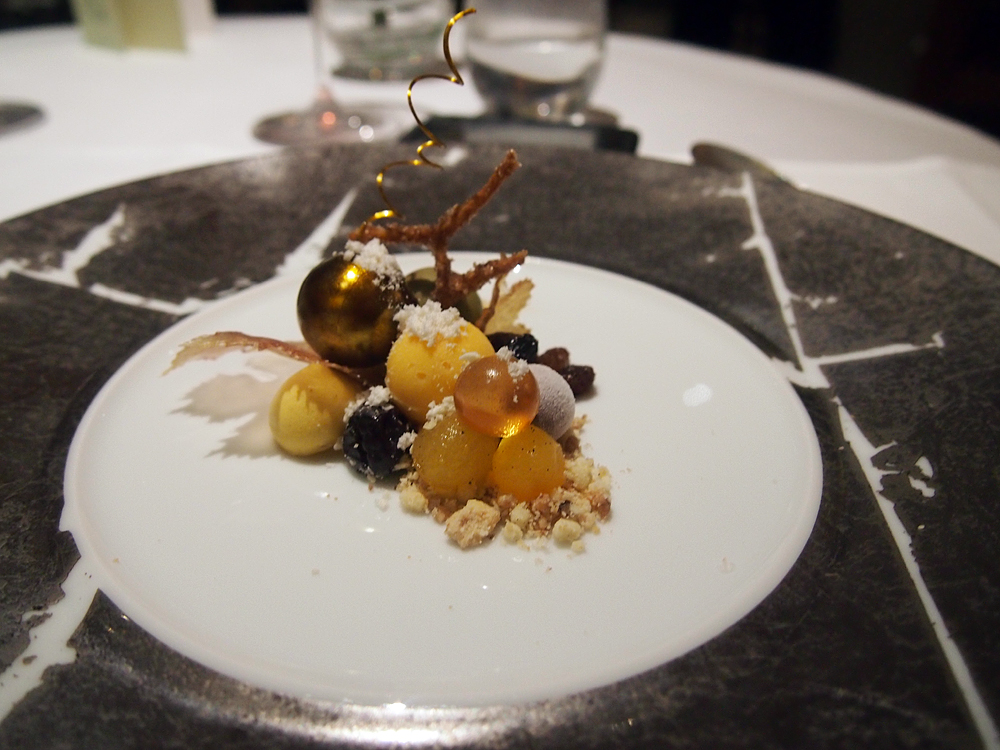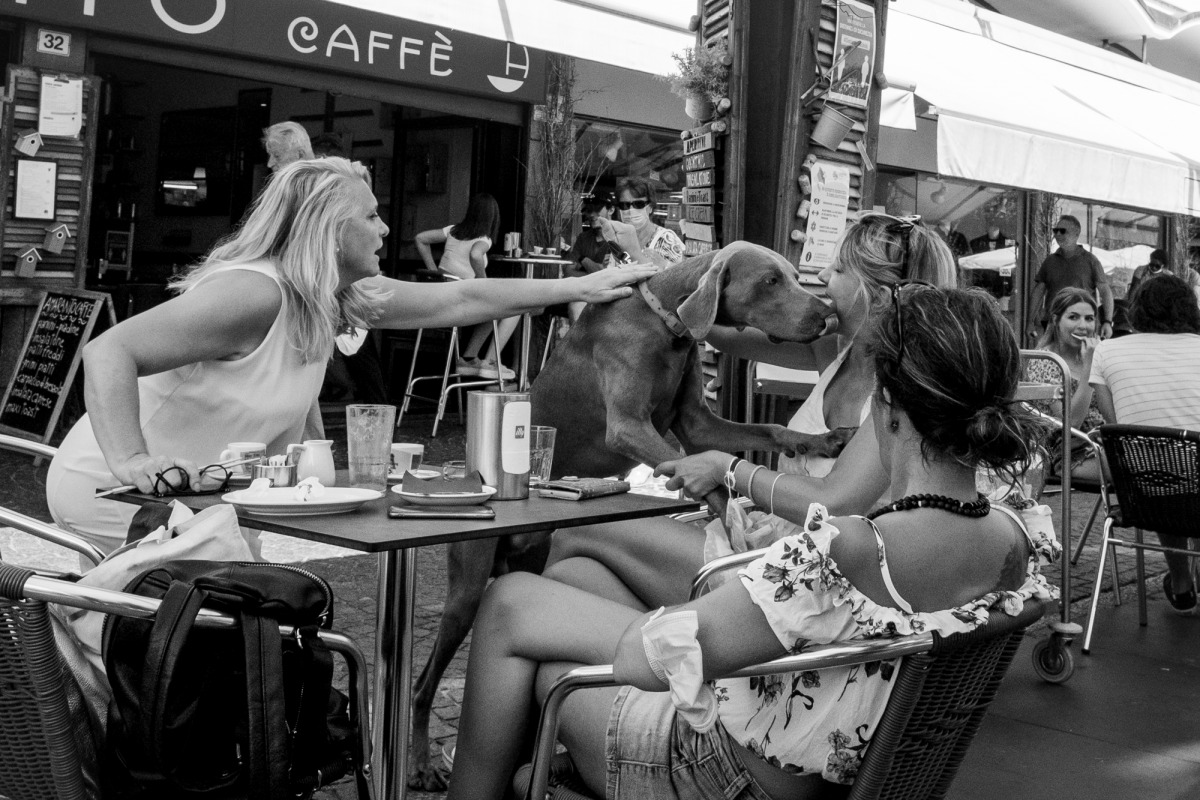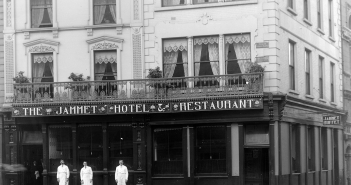The anthropologist Jack Goody pours scorn on modern dining habits. Solitary consumption he says reverses the customary habit of ‘public input and private output’, making eating alone ‘the equivalent of shitting publicly.’
Dining, after all, as the great gastronome Jean-Anthelme Brillat-Savarin, put it: ‘is the common bond which unites the nations of the world in reciprocal exchanges of objects serving for daily consumption.’
The restaurant emerged as a distinctive forum for public consumption in eighteenth century France. Prior to that it was the simple table d’hôte, where a traiteur would present a large pot to the assembled diners, who arrived at the appointed hour.
This could present difficulties, however, if agreed conventions were lacking on how diners were to participate. On his travels in France, the agronomist Arthur Young bemoaned the greed of his dining companions in hostelries, saying, ‘the ducks were swept clean so quickly that I moved from the table without half a dinner’. In the wake of the French Revolution, an upwardly mobile bourgeoisie sought a more recherché experience.
Originally, restaurants (deriving from the verb restaurer ‘to restore to a former state’) sold medicinal broths. In her history, The Invention of the Restaurant (2000), Rebecca Spang recalls how the restaurants of eighteenth-century Paris differentiated themselves from other eateries by offering sustenance at any time of day. Eventually they began offering more solid fare, thereby encroaching on the traiteurs.
The strict laws regulating the division of business between the different food guilds in France at the time led to a landmark court case in which the restaurateurs carried the day. This allowed the restaurant-style of dining, ‘characterized not by commonwealth but by compartmentalization’, to emerge as the dominant form of eating out in the Western world.

Fine Dining,
Elitist Quality
Today, restaurants invariably ‘plate’ each dish before presentation to the individual customer a style known as service à la russe, which replaced the more medieval display of service à la Francaise during the mid-nineteenth century.
The elitist quality of the restaurant experience is part of its appeal. Indeed, according to Sprang, the ‘restaurant fantasy implicitly required the presence of somebody outside: some poor devil with his nose pressed to the window’.
Thus, a restaurant is more than merely an establishment where food is served. It involves the division of diners into parties and, generally, serves separate portions to individuals. It remains synonymous with French food, and the dominance of French cuisine is apparent in the early history of Dublin restaurants, although this has changed radically in recent decades.
Apart from chefs, waiting staff and often indulgent investors, the most important person for a restaurant’s survival is the food critic. A bad review can sink a restaurant, while praise can bring customers flooding into the next big thing, although in recent times food criticism is being overtaken by online reviewers that are subject to manipulation.

Grimod de La Reynière
The First Gastronome
A food critic may also be referred to as a gastronome. The first of this kind was Alexandre Balthazar Laurent Grimod de la Reynière who wrote his Almanach des Gourmands in the wake of the Revolution.
He issued his pronouncements in the name of tradition as a member of the departed ancien regime. The son of a rich farmer-general, in his early life he displayed liberal tendencies but became disillusioned with the new order, condemning ‘everything that is despicable and vile; there in two words you have the Revolution’.
He asserts: ‘I will never be the friend of a democrat. It is atrocious that men of letters should think as the majority do today (MacDonogh,1997).’
According to his biographer MacDonogh, he began to write about food after being told to write about something harmless, or give up writing altogether. In this medium he ‘masked his vicious attacks behind harmless idioms’. Gastronomy became a vehicle for his reactionary views.
An awareness of ‘good’ food revealed the true aristocrat. After the Revolution he founded what he referred to as a Jury des Degustateurs, and between 1803 and 1812 set about writing his Almanach des Gourmands. The aristocratic display of pre-Revolutionary France could re-emerge in the new forum of the public restaurant.
De la Reynière was also alive to the possibility that he could be labelled a glutton, asserting: ‘Let it be said that of all the Deadly Sins that mankind may commit the fifth appears to be the one that least troubles his conscience and causes him the least remorse.’ Henceforth a glutton would be one who eats too much rather than a refined individual with an interest in talking about food.
The gastronome in his or her most evolved form is not a professional cook. He or she is a man of letters. His or her real table is not the one where he eats but where he or she writes. It is with the flourish of the pen that he or she achieves success rather than through their knowledge of the arcane culinary arts, as ultimately the gastronome is not the one who knows the most, but the one who speaks, and writes, best.

Garden café of the Hôtel Ritz Paris (1904), Pierre-Georges Jeanniot.
‘Lightning Sketches on the Table Cloth’
Curnonsky, the pen name of the great French food critic Maurice Edmond Sailland who was elected Prince Elect of Gastronomy by Le Soir magazine in 1927 describes the role as follows:
There are those who stare with gluttonous resentment, and those who snap impatient fingers at every passing waiter: those who flap huge newspapers in their companions’ faces, and those who shake defiant powder-puffs in their neighbours soup; those who devour bread to repletion, and those who chat so gaily, to the restaurant at large. But there are others, a chosen few who, having developed to a fine degree the study of physiognomy and, coupling this with a skilled pen or pencil, combine their talents in lightning sketches on the tablecloth.
Pascal Ory poses the question ‘Does the chef make the gastronome or vice versa?’. Culinary evolution is largely independent of gastronomic evaluation, but without a critical audience chefs may be insensitive to diners’ tastes.
Moreover, just as when we cook for ourselves we don’t tend to perform heroics, a cook without a responsive audience might take a more functional approach. But innovation and high standards become an imperative when the food critic is there to evaluate.
Even if they may claim to have nothing but contempt for the breed, virtuoso chefs usually seek the validation of critical approval, and boundaries are only broken when gastronomes are there to describe them as such. More to the point, the imprimatur of the critic brings great rewards. Perhaps unfairly, the pen is often mightier than the kitchen knife.
Notwithstanding increasing costs in a fraught business, the back breaking labour of chefing, improved takeaways, the strains of Covid and the distortion of food criticism through sites like TripAdvisor, restaurant dining endures as a sought after experience. After all, where else would anyone refer to me as “Sir”.
Feature Image: Daniele Idini




